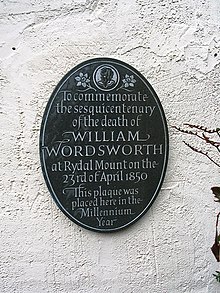

Letter cutting is a form of inscriptional architectural lettering closely related to monumental masonry and stone carving, often practised by artists, sculptors, and typeface designers. Rather than traditional stone carving, where images and symbols are the dominant features, in letter cutting the unique skill is "meticulous setting out and skilled cutting of the lettering style, in terms of design, angle and depth of the lettering".[1]
Letter carvers see the drawing and carving of letters as a particular craft in itself, allied to but distinct from masonry and carving in general. Most letter carvers are both designers and carvers. Typefaces designed for printing are rarely satisfactory when carved into stone, so most letter carvers design their own letterforms.[2]
— Daniel Carpenter, Heritage Crafts Association, April 2017
"However, the majority of letter cutting is now manufactured using methods such as sand blasting and laser etching".[1]
Notable practitioners include:
- Nicholas Benson
- Eric Gill
- Ralph Beyer
- Michael Harvey
- David Kindersley
- Richard Kindersley
- John Shaw
- Reynolds Stone
- Macdonald Gill
- Bryant Fedden
References
[edit]- ^ a b "Letter Cutting and Carving". Scotland: LTM Group Ltd.
- ^ Carpenter, Daniel (April 30, 2017). "Letter cutting". Heritage Crafts.
Well, that’s interesting to know that Psilotum nudum are known as whisk ferns. Psilotum nudum is the commoner species of the two. While the P. flaccidum is a rare species and is found in the tropical islands. Both the species are usually epiphytic in habit and grow upon tree ferns. These species may also be terrestrial and grow in humus or in the crevices of the rocks.
View the detailed Guide of Psilotum nudum: Detailed Study Of Psilotum Nudum (Whisk Fern), Classification, Anatomy, Reproduction